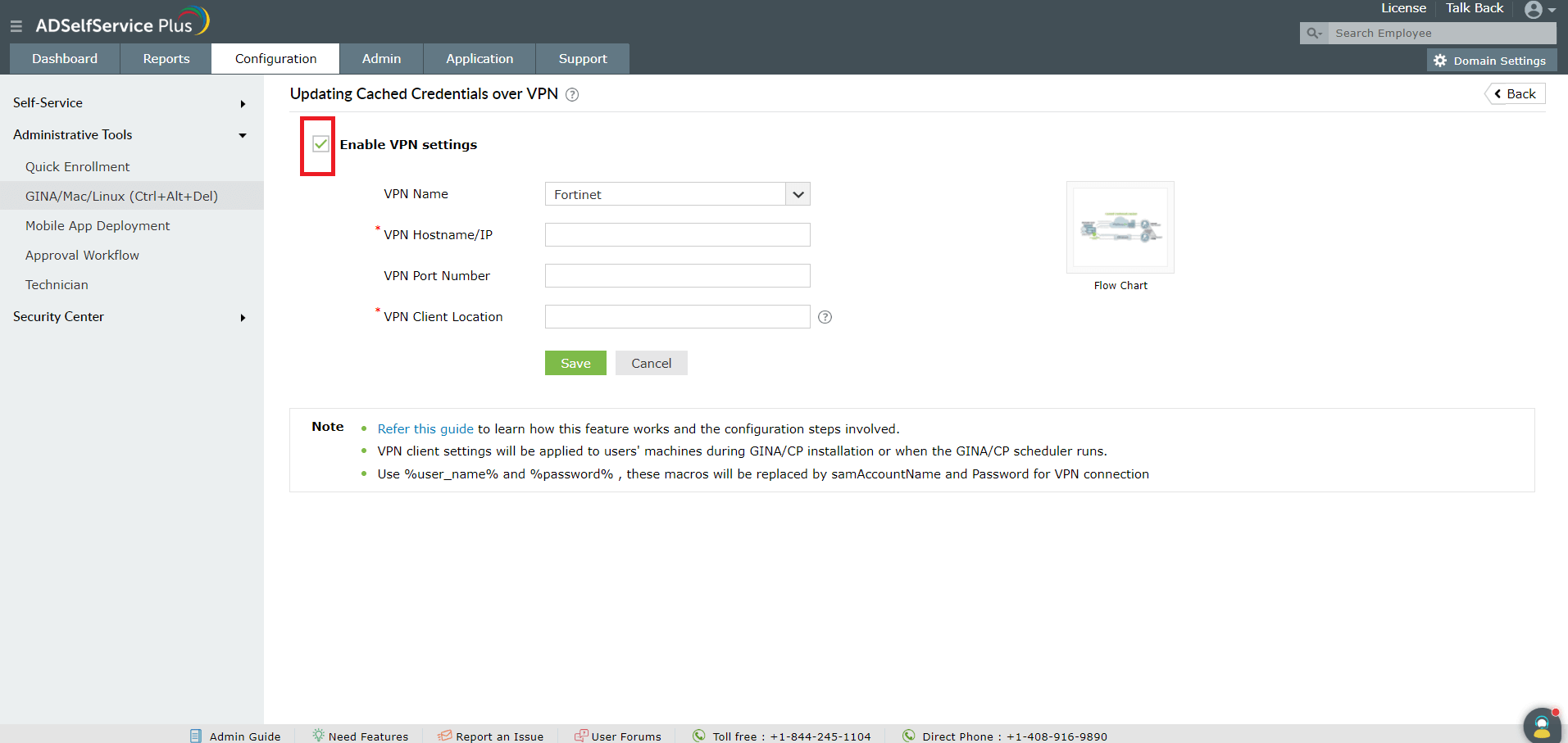ADSelfService Plus can automatically update the locally cached credentials in remote users’ machines as and when they reset their passwords.
To update cached credentials, ADSelfService Plus requires the Windows logon agent, bundled with the product, and a command line VPN client to be installed in the users' machines. It supports these VPN clients: Fortinet, Cisco IPSec, Cisco AnyConnect, Windows Native VPN, SonicWall NetExtender, Checkpoint EndPoint Connect, and SonicWall Global VPN. You can also configure custom VPN clients to update the cached credentials. This article will give you step-by-step instructions to configure a custom VPN client with ADSelfService Plus for cached credentials update.

Note: The VPN configurations will be reflected on the users’ machines either during the GINA/CP client installation, or when the GINA/CP scheduler runs.
Like this tip? Get the most out of ADSelfService Plus by checking out more tips and tricks here.
Need further assistance? Fill this form, and we'll contact you rightaway.
Allow Active Directory users to self-service their password resets and account unlock tasks, freeing them from lengthy help desk calls.
Get seamless one-click access to 100+ cloud applications. With enterprise single sign-on, users can access all their cloud applications using their Active Directory credentials.
Intimate Active Directory users of their impending password and account expiry via email and SMS notifications.
Synchronize Windows Active Directory user passwords and account changes across multiple systems automatically, including Microsoft 365, Google Workspace, IBM iSeries, and more.
Strong passwords resist various hacking threats. Enforce Active Directory users to adhere to compliant passwords by displaying password complexity requirements.
Enable Active Directory users to update their latest information themselves. Quick search features help admins scout for information using search keys like contact numbers.